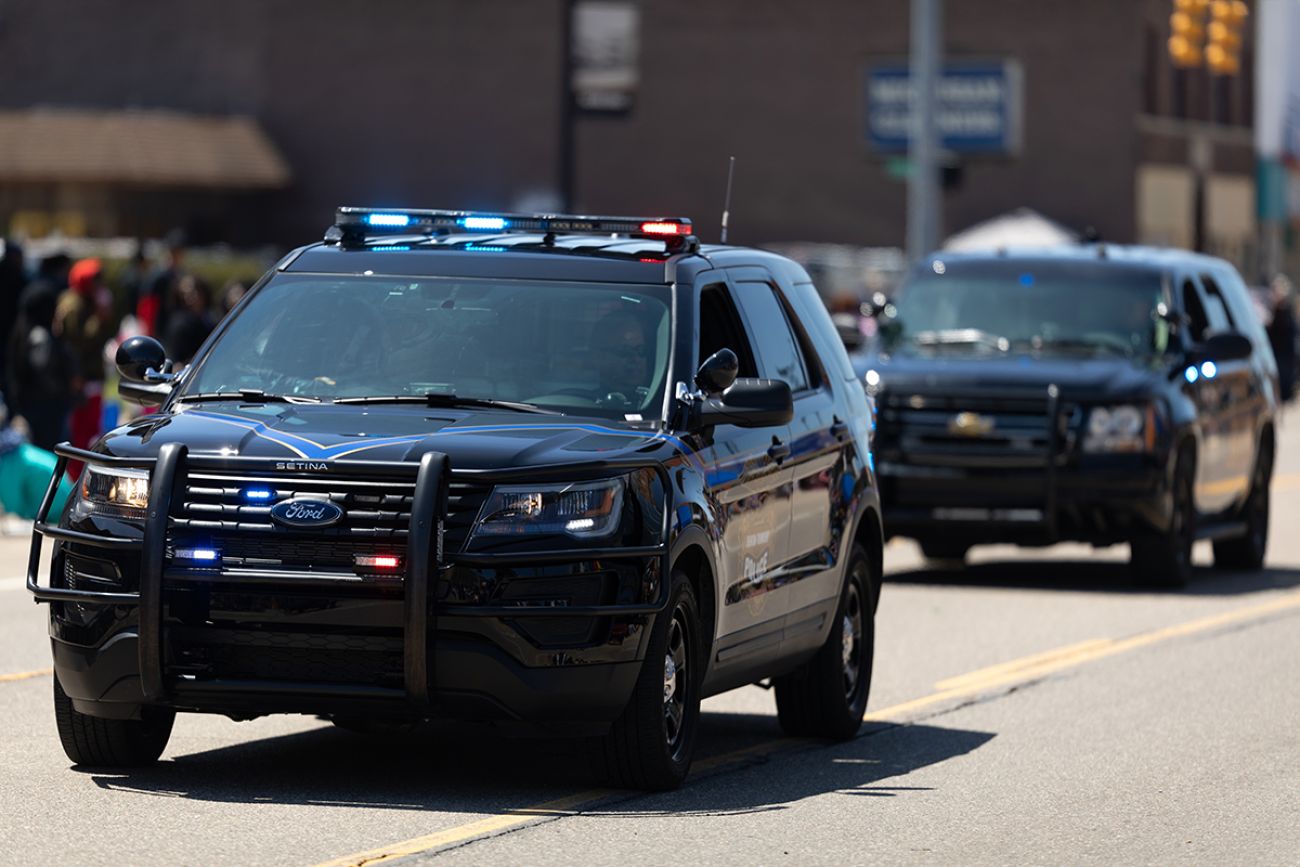Michigan police agencies sweating enforcement of 'red flag' gun laws

LANSING – Law enforcement agencies across the state are wrestling with thorny challenges posed by a new law intended to take firearms away from individuals with a high risk of violence.
The “red flag” law, which takes effect next spring, will allow courts to issue extreme risk protective orders against people who pose a risk of personal injury to themselves or others by having firearms.
The orders would prohibit them from possessing or purchasing a firearm.
Requests for extreme risk protective orders could come from law enforcement officers, family and household members, including those with a current or previous dating relationship, and health care providers. They must provide a judge with evidence to support those requests.
Related:
- Michigan Capitol Commission bans guns, but exempts lawmakers from rule
- As school returns, Flint and Grand Rapids rethink their backpack bans
- University of Michigan campus gun ban upheld by Court of Appeals
Nineteen other states, including Indiana, Florida and California, have similar laws.
However, as the time for the law to take effect moves closer, some police chiefs and sheriffs around the state say they’re worried about the ways their agencies will have to deal with the changes.
Robert Stevenson, the executive director of the Michigan Association of Chiefs of Police in Okemos, said that while he supports the law because he does not believe people who are “not mentally balanced” should have firearms, he worries about the safety of the officers who will be taking the guns away.
“If you have somebody who says that they’re paranoid, and they’re dangerous, and they’ve got firearms, and somebody gets an order that tells this person you need to turn in your firearms, who’s going to go to this house with the dangerous, psychotic person that’s paranoid and try to take their guns from them?” Stevenson said.
“In what way is that going to happen?” he said.
Stevenson speculated about several potential scenarios:
What happens if the person with the order tries to hurt the officers? What if the person who was deemed suicidal becomes overwhelmed and still poses harm to themselves when their guns are being seized? What if the individual with an order has to be detained by force or even be killed, due to the threat they pose?
“I mean, you have got to imagine the optics are terrible, right?” Stevenson said. “We’re trying to save somebody in the family. We went to the police to save them, and they killed them.”
However, Sen. Mallory McMorrow, D-Royal Oak, who spearheaded the legislation, said that when she studied the laws in other states, such as California and Florida, she found no instances of a gun being fired during a seizure of weapons.
McMorrow shared a story she heard at a Senate committee hearing that illustrated what she said is the need for the law.
Her constituent, Mary Miller, who spoke at the bill signing ceremony in Royal Oak, had a brother who was a combat veteran suffering from post-traumatic stress disease, or PTSD.
Miller said that he expresed suicidal thoughts to his parents and was seeking treatment from the Veterans Administration.
His family took his picture to all of the gun stores near where he lived and told them not to sell him a gun. However, her brother was able to buy a gun and died by suicide.
“That was a perfect example of him having all the resources that there was, just was not a mechanism for them to be able to stop somebody from selling him a gun,” McMorrow said.
McMorrow said that extreme risk protection orders are usually a final call for help for many people in crisis, such as veterans suffering from PTSD or those dealing with mental illness.
As a result, that leads to many situations where they voluntarily surrender their firearms and avoid a fight.
“This is an individual who’s going through a crisis,” McMorrow said. “There’s a mental health component here and somebody who’s contemplated suicide.
“The law enforcement agencies told us they would treat those differently, and they feel confident that they would be able to handle it,” she said.
McMorrow also said her research showed most police departments in Michigan will see only one extreme risk protective order request a year.
McMorrow also said social work and mental health services have a role in implementing the law whether through judges providing mental health resources when issuing an order or having a social worker accompany police on visits to subjects of such orders.
“We have to think about this paired with access to mental health services and making sure somebody has the support that they need, because it’s also temporary,” McMorrow said.
“The person can then retrieve their firearms or be able to purchase a firearm. The way that this is most successful is when it is treated as a lifesaving tool and not a criminal tool,” she said.
Roger Squiers, the police chief in Whitehall and member of the chiefs association’s legislative committee, said that while he shares safety concerns, he works in a small town which creates a better dynamic in community policing with officers seen as community leaders.
He said his department “will have a better platform to work from” when dealing with someone with a red flag order.
Officers could build on that relationship to say, “Hey, we got to do this and we’ll see what happens, but this isn’t us being mean,” Squiers said.
On the other hand, Squiers said working in a small department gives him less time to research legal and enforcement plans to develop strategies before the new law is implemented.
As part of the West Michigan Criminal Justice Training Consortium, Squiers said he expects that law enforcement agencies will provide training when spring rolls around.
Matt Saxton, the executive director of the Michigan Sheriffs’ Association, said his organization was never asked to comment on conversations of how to enforce the new law.
Saxton said that he asked multiple times to be part of the enforcement process with the governor’s office, but was instead left in the dark, not sure what to strategize for and what to envision when it takes effect.
“Comparing other states is comparing apples to oranges because the bills are not the same in every state,” Saxton said. “Our statute does not match other state statutes, and we don’t even have our process in place. We really can’t say how many (instances) we’re going to see.”
Saxton said enforcement strategies will be left to local municipalities instead of having a statewide standardized strategy.
Stevenson said law enforcement agencies are likely to collaborate with each other, asking neighboring departments for backup during the firearm retrieval process.
Saxton said he doesn’t believe that extreme risk protection laws are the best laws that could be passed, but hopes they will keep both the public and law enforcement officers safe.
See what new members are saying about why they donated to Bridge Michigan:
- “In order for this information to be accurate and unbiased it must be underwritten by its readers, not by special interests.” - Larry S.
- “Not many other media sources report on the topics Bridge does.” - Susan B.
- “Your journalism is outstanding and rare these days.” - Mark S.
If you want to ensure the future of nonpartisan, nonprofit Michigan journalism, please become a member today. You, too, will be asked why you donated and maybe we'll feature your quote next time!




